Spring is coming, spring is the way
“I’ve completely gone crazy!” - the reader will say - “What a spring, when there is ice and snow around the neck outside the window?” Yes, indeed, the calendar spring begins on the first of March, and the astronomical spring begins on March 20-21. But if we build a graph of the longitude of the day and the rate of its change, we will see that at the end of January - the beginning of February there is a section, when in most Russian cities the rate of lengthening the day approaches the maximum and then does not increase significantly. And since spring is the time when the day is increasing significantly, we can say that in a sense, spring has already arrived.
Also, at the end of this week a half-shadow lunar eclipse and the passage of a comet near the Earth are expected, and I would like to remind you of this.
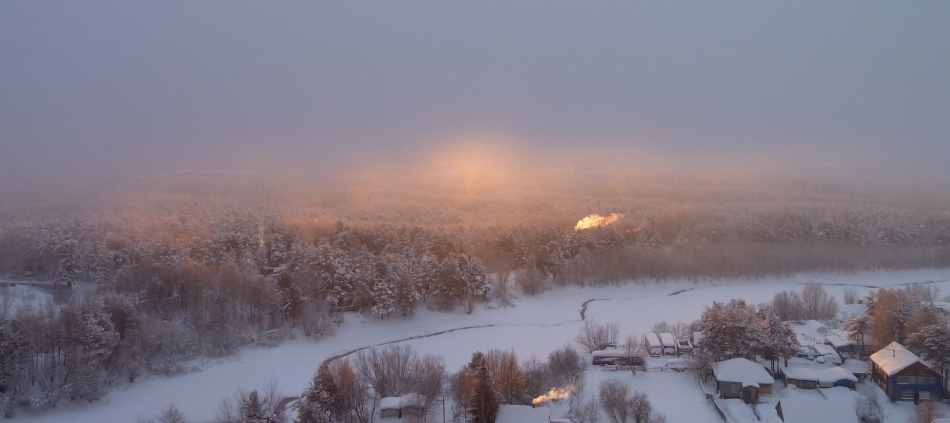
User's picture is aszed from Pikabu, cropped.
For clarity of explanation of the thesis expressed in the first paragraph, let's take a trip along the longitude of the day in different parts of Russia. The initial data for plotting graphs are taken from the site voshod-solnca.ru .
The southernmost large city of Russia is Derbent in the south of Dagestan, located at 42 latitude. His lengthening speed reaches two minutes on January 24 and does not exceed three minutes, a maximum of 2 minutes and 52 seconds on the day of the vernal equinox.
')
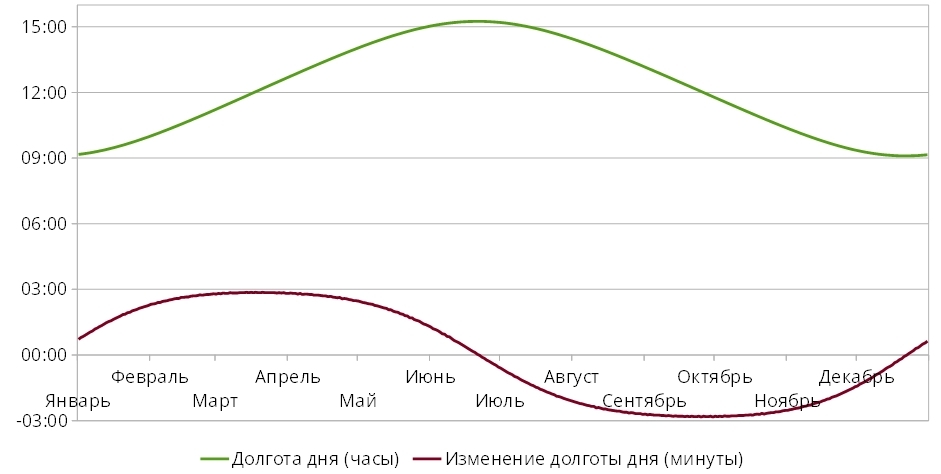
Many large cities of Russia are located in the area of 55 latitude: Samara (53.19 °), Ufa (54.73 °), Omsk (54.98 °), Novosibirsk (55.02 °), Chelyabinsk (55.16 °), Moscow (55.76 °), Kazan (55.80 °), Nizhny Novgorod (56.32 °), Yekaterinburg (56.83 °). And at this latitude, the “shelf” of the rate of change in the length of the day becomes noticeable. For example, in Ufa, daylight starts to lengthen by 4 minutes on February 6 (this is today, what a surprise :)) and reaches a maximum of 4 minutes 29 seconds on March 20.
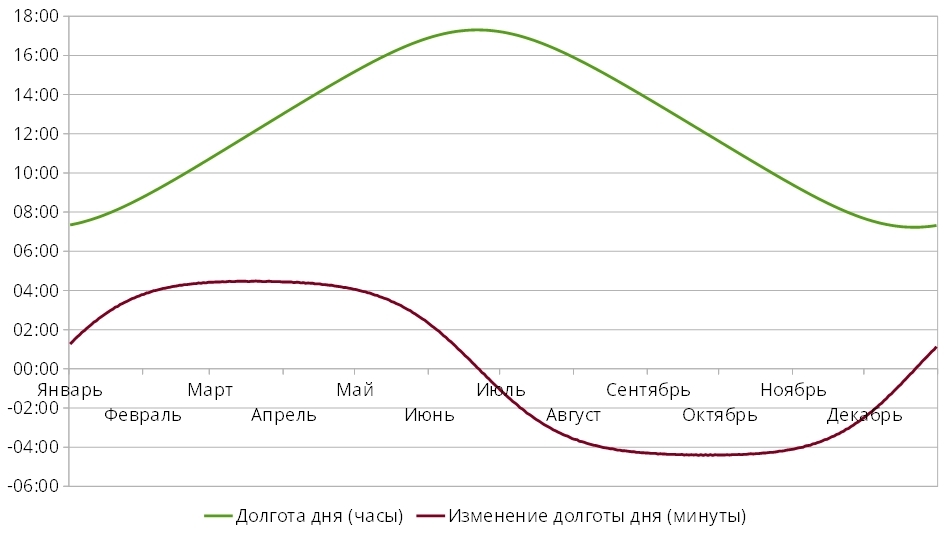
Let's move to St. Petersburg, a city in which the latitude of 59.93 ° gives rise to white nights. Light day begins to lengthen for 5 minutes on February 4, and the maximum is 5 minutes 27 seconds.

Moving further to the north, we are approaching the polar circle - the territory where the sun does not set in summer and does not appear over the horizon in winter. How will our charts behave? Let's stop very close to the Arctic Circle, 16 kilometers south of the village of Sofporog (Republic of Karelia). The graph of the longitude of the day from a sine wave became triangular, and the graph of the rate of change in the longitude of the day finally turned into a rectangular one.

Note the difference in slope of the graph in the area of winter and summer solstice. This happens for two reasons. First, the Sun is a disk, not a point, and sunrise and sunset are considered to be at the top of the disk, not the middle. Secondly, the atmospheric refraction on the horizon “raises” the Sun slightly more than its diameter (that is, at the moment when the lower edge of the Sun touches the horizon, the Sun would not be visible on a planet without an atmosphere). It turns out that there should be areas where there is a polar day, but there is no polar night. Indeed, such a place can be found halfway between Kandalaksha and Apatity (Murmansk region).
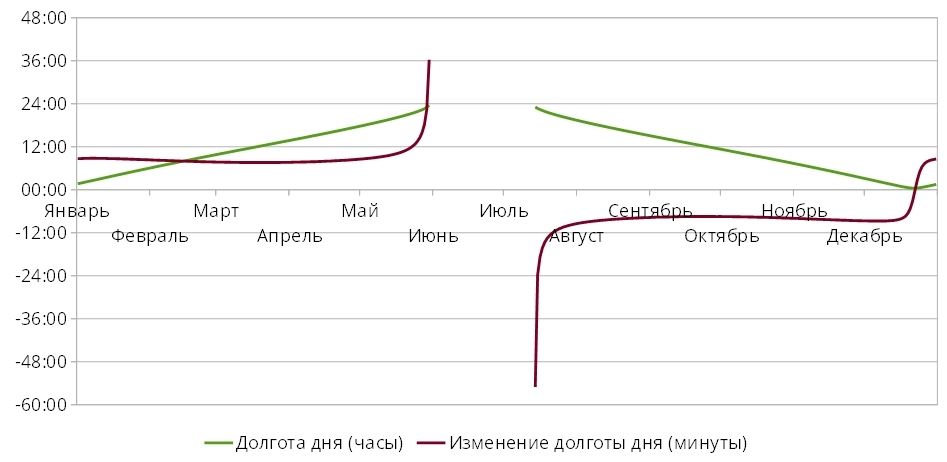
And finally, beyond the Arctic Circle, the graph opens in two places. This is data for Sputnik village in the Murmansk region.
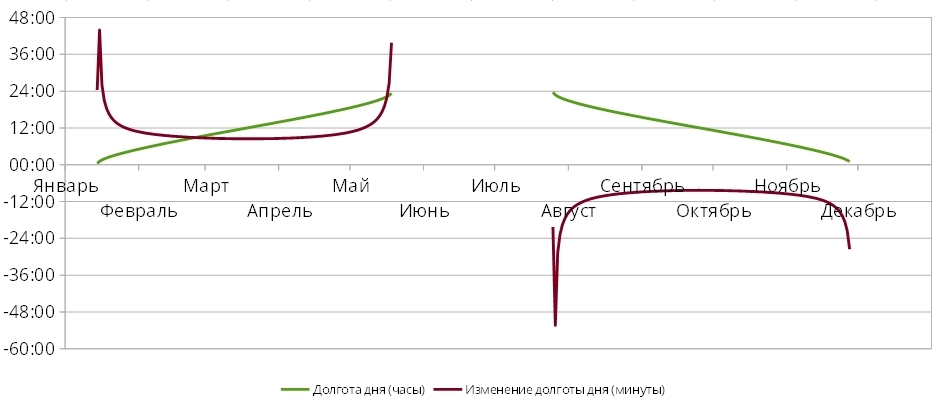
Why, then, does a tangible spring come after the beginning of February? There are no secrets here either. First, the day is still quite short, and the sun is still low above the horizon. It is the angle of incidence of sunlight that determines the amount of heat that one square meter will receive. Secondly, parts of the planet warmed up in summer or cooled in winter have a certain inertia. August may well be very hot, and February - cold, despite the fact that the sun is already moving towards equinox. For example, it is known that ice in the Arctic reaches its maximum area in March, and its minimum in September.

On the night of February 11 there will be a half-shadow lunar eclipse. Due to the fact that the Sun is not a point, the shadow of the Earth has two parts - the actual shadow and partial shade. When the moon enters the penumbra, it darkens at one end. This is called the penumbral eclipse.
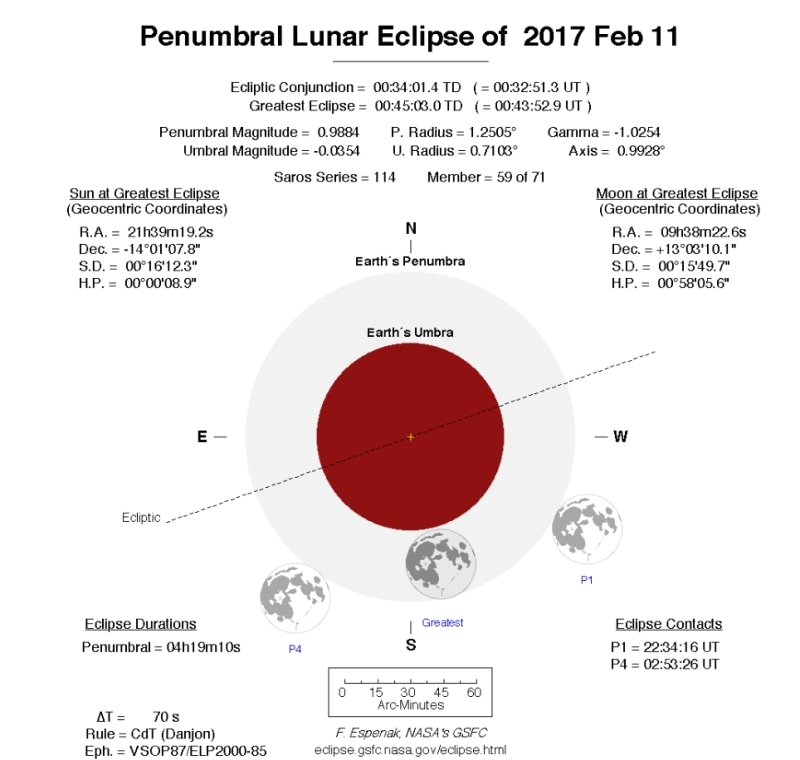
Residents of the European part of Russia will be able to observe the eclipse completely, but, given the winter and the cold, it can hardly be called comfortable. So I would recommend the broadcast, astronomy enthusiasts from slooh.com will definitely lead it, maybe someone else will connect.
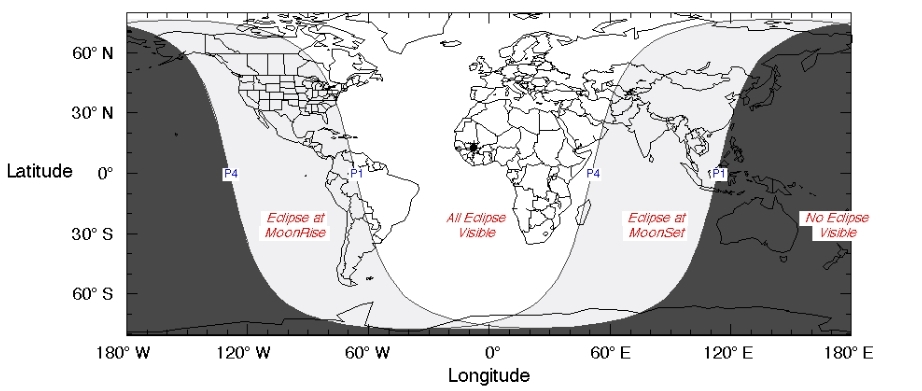
On the same day, February 11, comet 45P / Honda-Mrkos-Paidushakova will pass just 0.08 astronomical units (12 million kilometers) from Earth. Sometimes in such cases, illiterate (or people who want to popiaritsya) people raise a panic, they say, the substance from the comet will poison us all. If you hear - do not worry. As for the observation of a comet, then we are not lucky. A lunar eclipse is possible only in the vicinity of a full moon, which means that the Moon, with its bright light, will prevent us from observing the comet. It is expected that the brightness of the comet will reach 6 magnitude, that is, on the border of the visible with the naked eye. If you wish, you can try your luck with binoculars / telescope, here's the search pattern.

Also, at the end of this week a half-shadow lunar eclipse and the passage of a comet near the Earth are expected, and I would like to remind you of this.

User's picture is aszed from Pikabu, cropped.
Journey through the longitude of the day
For clarity of explanation of the thesis expressed in the first paragraph, let's take a trip along the longitude of the day in different parts of Russia. The initial data for plotting graphs are taken from the site voshod-solnca.ru .
The southernmost large city of Russia is Derbent in the south of Dagestan, located at 42 latitude. His lengthening speed reaches two minutes on January 24 and does not exceed three minutes, a maximum of 2 minutes and 52 seconds on the day of the vernal equinox.
')

Many large cities of Russia are located in the area of 55 latitude: Samara (53.19 °), Ufa (54.73 °), Omsk (54.98 °), Novosibirsk (55.02 °), Chelyabinsk (55.16 °), Moscow (55.76 °), Kazan (55.80 °), Nizhny Novgorod (56.32 °), Yekaterinburg (56.83 °). And at this latitude, the “shelf” of the rate of change in the length of the day becomes noticeable. For example, in Ufa, daylight starts to lengthen by 4 minutes on February 6 (this is today, what a surprise :)) and reaches a maximum of 4 minutes 29 seconds on March 20.

Let's move to St. Petersburg, a city in which the latitude of 59.93 ° gives rise to white nights. Light day begins to lengthen for 5 minutes on February 4, and the maximum is 5 minutes 27 seconds.

Moving further to the north, we are approaching the polar circle - the territory where the sun does not set in summer and does not appear over the horizon in winter. How will our charts behave? Let's stop very close to the Arctic Circle, 16 kilometers south of the village of Sofporog (Republic of Karelia). The graph of the longitude of the day from a sine wave became triangular, and the graph of the rate of change in the longitude of the day finally turned into a rectangular one.

Note the difference in slope of the graph in the area of winter and summer solstice. This happens for two reasons. First, the Sun is a disk, not a point, and sunrise and sunset are considered to be at the top of the disk, not the middle. Secondly, the atmospheric refraction on the horizon “raises” the Sun slightly more than its diameter (that is, at the moment when the lower edge of the Sun touches the horizon, the Sun would not be visible on a planet without an atmosphere). It turns out that there should be areas where there is a polar day, but there is no polar night. Indeed, such a place can be found halfway between Kandalaksha and Apatity (Murmansk region).

And finally, beyond the Arctic Circle, the graph opens in two places. This is data for Sputnik village in the Murmansk region.

Why, then, does a tangible spring come after the beginning of February? There are no secrets here either. First, the day is still quite short, and the sun is still low above the horizon. It is the angle of incidence of sunlight that determines the amount of heat that one square meter will receive. Secondly, parts of the planet warmed up in summer or cooled in winter have a certain inertia. August may well be very hot, and February - cold, despite the fact that the sun is already moving towards equinox. For example, it is known that ice in the Arctic reaches its maximum area in March, and its minimum in September.

The penumbra eclipse February 11
On the night of February 11 there will be a half-shadow lunar eclipse. Due to the fact that the Sun is not a point, the shadow of the Earth has two parts - the actual shadow and partial shade. When the moon enters the penumbra, it darkens at one end. This is called the penumbral eclipse.

Residents of the European part of Russia will be able to observe the eclipse completely, but, given the winter and the cold, it can hardly be called comfortable. So I would recommend the broadcast, astronomy enthusiasts from slooh.com will definitely lead it, maybe someone else will connect.

Comet
On the same day, February 11, comet 45P / Honda-Mrkos-Paidushakova will pass just 0.08 astronomical units (12 million kilometers) from Earth. Sometimes in such cases, illiterate (or people who want to popiaritsya) people raise a panic, they say, the substance from the comet will poison us all. If you hear - do not worry. As for the observation of a comet, then we are not lucky. A lunar eclipse is possible only in the vicinity of a full moon, which means that the Moon, with its bright light, will prevent us from observing the comet. It is expected that the brightness of the comet will reach 6 magnitude, that is, on the border of the visible with the naked eye. If you wish, you can try your luck with binoculars / telescope, here's the search pattern.

Source: https://habr.com/ru/post/373137/
All Articles